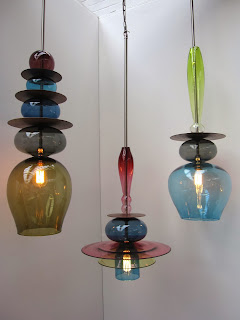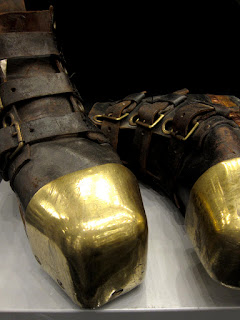Probably strange to hear from a professional designer but lately I feel a little blasé by the constant offer of design events. Sometimes I find myself secretly longing for the days that only the Milan event was on the design radar. Nevertheless I decide to cross the canal to see what the London Design Festival is about this year.
The festival guide shows an overwhelming amount of activities. They are spread like a virus all over the map of London. Very intimidating! I wonder how to set my priorities. Can I skip one of the many design districts without having to deal with the disappointment of a missed highlight? It feels like a mission impossible!
I decide to focus on the bigger events and the more clustered design presentations. To broaden my horizon outside the festival I plan to pay some visit to the world of retail. And I promise myself to attend at least one Art exhibition.
The kick-off is at the Saatchi Gallery and it turns out the be a lucky shot in the dark. The current exhibition is called Paper and showcases a diverse and convincing collection of installations, paintings, paper cuttings and collages.
 |
Floating City by Han Fen
|
One of my favourite works is ‘The floating city’ by Han Feng. A composition of laser printed buildings that seem to disappear in a mist of frosted tracing paper An ethereal city silently floating a couple of inches above the gallery flooring. An interesting detail is how the raw identity of the wood grain flooring is emphasized by and becoming part of this fragile three dimensional collage.
The theme ‘collage’ is obviously a popular subject when paper as a medium is involved. In this wonderful exhibition various collage techniques are used from traditional to refreshingly different like the work of Han Feng. But all have their own particular ‘spark of poetry’. The spark that according to the artist Max Ernst can be created when two or more unrelated realities meet on an apparently inappropriate plane
This mix of realities will be a leitmotiv during the rest of my London design tour. I see collages everywhere and in all its aspects. Collages as compositions, compilations, assemblages, montages or even as a still life. It all radiates a strong desire for informal accidental rich and layered designs, designs as balanced constructions in which the separate elements are still traceable. An approach that clearly needs a strong vision!
Returning home I conclude that I am happy that I resisted my blasé attitude. The trip was definitely worthwhile making. The blend of different cultural realities that I experienced brought me this special spark of inspiration that I needed so much.
 |
| Window of Acne Fashion shop. |
 |
| An elegant knee boot inspired on a 20th century modernistic photo collage |
 |
Dover Street Market Fashion shop
|
 |
A four storeys high spacious ‘assemblage"
|
 |
Poster Shanghai exhibition. Compilation of objects into a Samourai mask
‘Separate elements that are clearly traceable in a balanced construction’
|
 |
The Jigsaw’ by Make Architects.
Various miniature houses which all stack together to form the overall larger dolls’ house
|
 |
‘Shrines’ by Dean and Callum Brown and Namyoung An.
A balanced compositions of miniature furniture into an altar for worshipping everyday objects.
|
 |
‘Collectionism’ by Songyi Lee. New design solutions for de-functional technological components.
|
 |
| Assemblages of colourful technological waste. |
 |
‘Triptych Stacks’ by Curiosa&Curiosa.
A stack of hand blown glass elements in an playful composition of geometric coloured shapes.
|






































